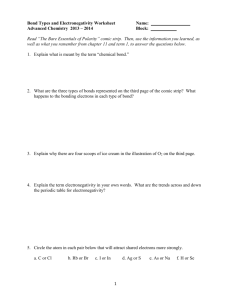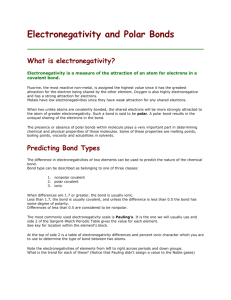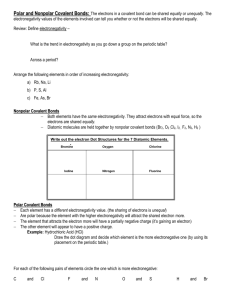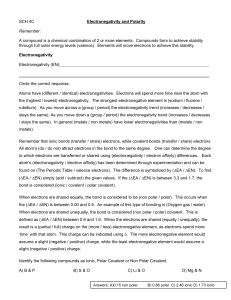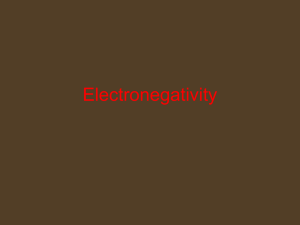Electronegativity & Polarity Worksheet
advertisement
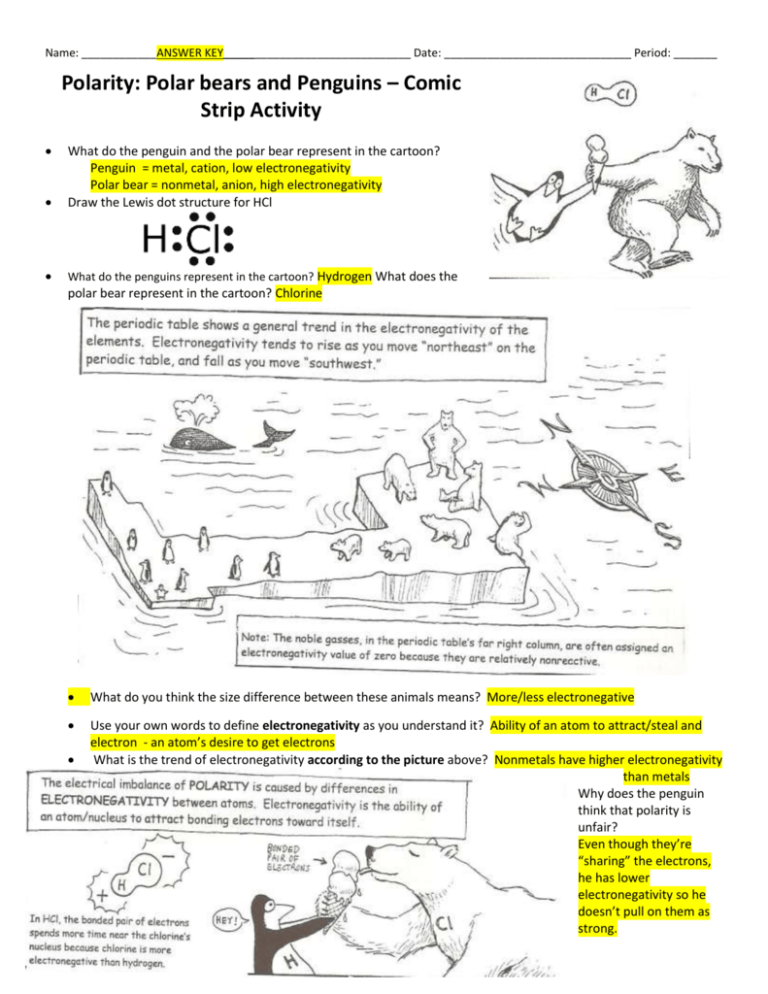
Name: ____________ANSWER KEY______________________________ Date: ______________________________ Period: _______ Polarity: Polar bears and Penguins – Comic Strip Activity What do the penguin and the polar bear represent in the cartoon? Penguin = metal, cation, low electronegativity Polar bear = nonmetal, anion, high electronegativity Draw the Lewis dot structure for HCl What do the penguins represent in the cartoon? Hydrogen What does the polar bear represent in the cartoon? Chlorine What do you think the size difference between these animals means? More/less electronegative Use your own words to define electronegativity as you understand it? Ability of an atom to attract/steal and electron - an atom’s desire to get electrons What is the trend of electronegativity according to the picture above? Nonmetals have higher electronegativity than metals Why does the penguin think that polarity is unfair? Even though they’re “sharing” the electrons, he has lower electronegativity so he doesn’t pull on them as strong. Explain what you think this crossed arrow above a bond could represent: Dipole moment (head of the arrow points to the atom with the higher electronegativity) Making Sense: What does electronegativity have to do with polarity? Polarity is the unequal sharing of electrons. Atoms with higher electronegativity pull on the electrons more. Electro Negativity: Use the Diagram Below What happens to the electronegativity values across each period from left to right? Increases What happens to the electronegativity values up each groups from bottom to top? Increases What type of atoms have the lowest electronegativity? (metals, nonmetals, or metalloids) CIRCLE ONE. What makes something an Ionic bond vs Covalent bond? If the difference between electronegativity is greater than 2.1 the bond is ionic. If the difference between electronegativity is less than.5 the bond is non polar covalent. If the difference between electronegativity is between .5 and 2.1 the bond is polar covalent. Using the table above, list 3 examples of pairs of atoms that would make ionic bonds K + Cl = 3.16 – 0.82 = 2.34 Ca + Cl = 3.16 – 1.00 = 2.16 Cr + F = 3.98 – 1.66 = 2.32 List 3 examples of pairs of atoms with polar covalent bonds P + Cl = 3.16 – 2.19 = 1.41 Ca + N = 3.04 – 1.00 = 2.04 Ba + I = 2.66 – 0.89 = 1.77

